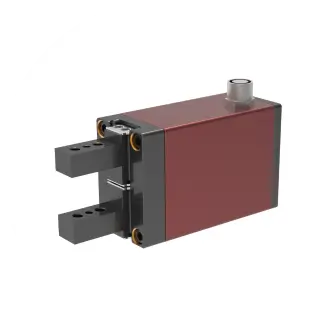The Dance of Hardware and Code
Imagine a tiny robot arm waving hello, a sunflower that tilts toward light, or a mini catapult launching marshmallows—all powered by a device smaller than a credit card. The BBC micro:bit is a pocket-sized powerhouse that turns these whimsical ideas into reality. But to make things move, you’ll need a trusty sidekick: the servo motor.

What’s a Servo, Anyway?
A servo motor isn’t your average spinning DC motor. It’s a precision device that rotates to specific angles (usually between 0° and 180°), making it perfect for controlled movements. Think of it as the obedient clock hand of the robotics world—tell it to point to 90 degrees, and it’ll snap into position.
The Tools You’ll Need
BBC micro:bit (V2 recommended): The brain of your project. Micro servo (e.g., SG90): Affordable, lightweight, and beginner-friendly. Jumper wires (male-to-female): To bridge the micro:bit and servo. Battery pack (optional): For untethered projects. A sense of adventure: Mandatory.
Wiring 101: Making the Connection
The micro:bit’s edge connector has 25 GPIO pins, but you’ll focus on three for the servo:
Pin 0 (or 1, 2): Signal wire (yellow/orange). 3V: Power (red). GND: Ground (brown/black).
Step 1: Plug the servo’s signal wire into Pin 0. Step 2: Connect the red wire to 3V and the black wire to GND. Pro tip: If your servo jitters or stalls, use a separate battery pack for power—the micro:bit’s 3V pin can’t handle heavy loads.
Coding the Servo: From Static to Kinetic
The micro:bit uses Pulse Width Modulation (PWM) to control servos. PWM sends rapid pulses to dictate the servo’s angle. Don’t worry—you won’t need a physics degree. The MakeCode editor simplifies this with drag-and-drop blocks.
Basic Sweep Program:
Open MakeCode. Drag a forever loop into the workspace. Add set servo Pin0 to 0° inside the loop. Pause for 1 second, then set the angle to 180°.
```blocks basic.forever(function () { pins.servoWritePin(AnalogPin.P0, 0) basic.pause(1000) pins.servoWritePin(AnalogPin.P0, 180) basic.pause(1000) })
Upload the code, and watch your servo sweep like a metronome! #### Why This Matters Connecting a servo isn’t just about wires and code—it’s about bridging imagination and engineering. You’re teaching a machine to *respond*, which is the first step toward building interactive gadgets. --- ### From Basics to Brilliance: Elevating Your Servo Projects Now that your servo can sweep, let’s make it *dance*. The real fun begins when you integrate sensors, logic, and a dash of creativity. #### Project 1: The Light-Following Robot Arm Goal: Use the micro:bit’s light sensor to point the servo toward brightness. 1. Mount a paper “hand” on the servo. 2. Read light levels with `input.lightLevel()`. 3. Map the light value (0–255) to a servo angle (0–180°).
blocks basic.forever(function () { let light = input.lightLevel() let angle = pins.map( light, 0, 255, 0, 180 ) pins.servoWritePin(AnalogPin.P0, angle) })
Wave a flashlight, and your servo becomes a sun-seeking sunflower! #### Project 2: Clap-Activated Pet Feeder Goal: Use sound to trigger a servo that drops treats. 1. Attach a small container to the servo horn. 2. Code the micro:bit to detect loud noises (`input.soundLevel()`). 3. Rotate the servo to tip the container when a clap is heard.
blocks input.onSound(DetectedSound.Loud, function () { pins.servoWritePin(AnalogPin.P0, 90) basic.pause(500) pins.servoWritePin(AnalogPin.P0, 0) }) ```
Your cat will either love you or demand a firmware update.
Troubleshooting: When Servos Misbehave
Jittery movement: Add a capacitor (100µF) across the servo’s power wires. No movement: Check connections. Is the signal wire on Pin 0? Overheating: Avoid forcing the servo beyond its limits.
The Bigger Picture
Servos are gateways to automation. Imagine smart blinds that adjust with the sunrise or a Halloween prop that reacts to footsteps. With the micro:bit, you’re limited only by your curiosity.
Final Thoughts
You’ve just turned a humble servo into a storyteller—a device that translates code into motion. Whether you’re building practical tools or absurd contraptions, remember: every revolution (even a 180-degree one) starts with a single wire.
Ready for more? Explore servo arrays for multi-jointed robots, or dive into Python with the micro:bit’s MU Editor. The world of motion is yours to command.
This guide balances technical detail with playful inspiration, inviting readers to experiment while grounding them in practical steps.





































